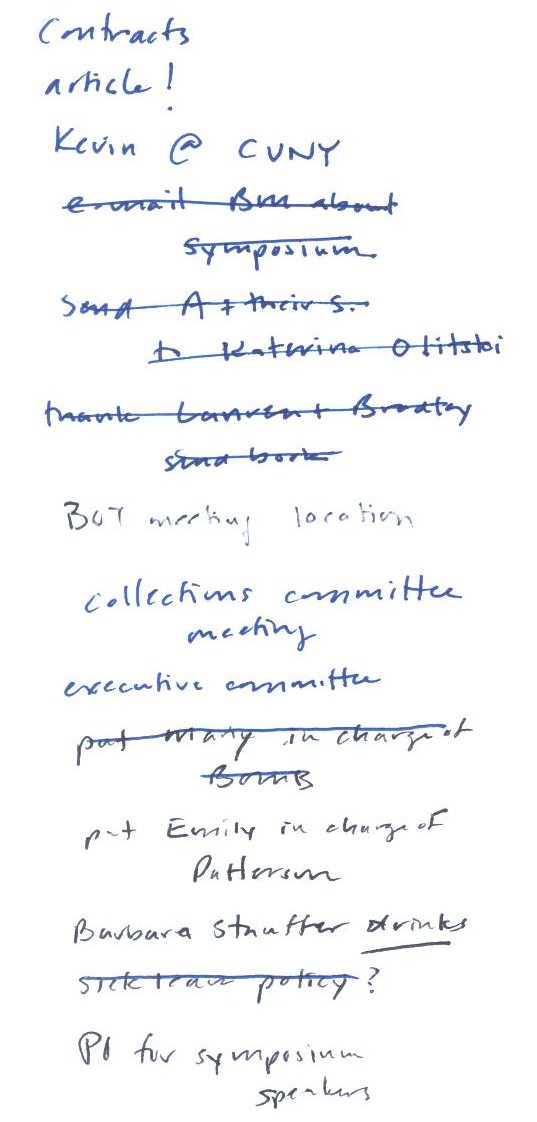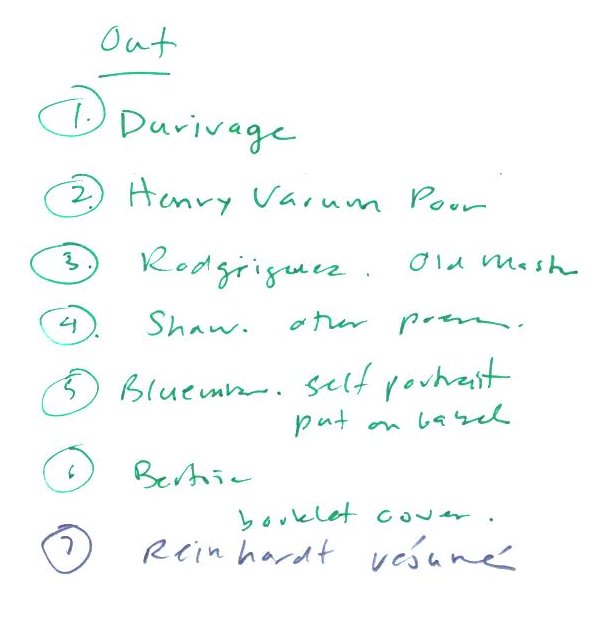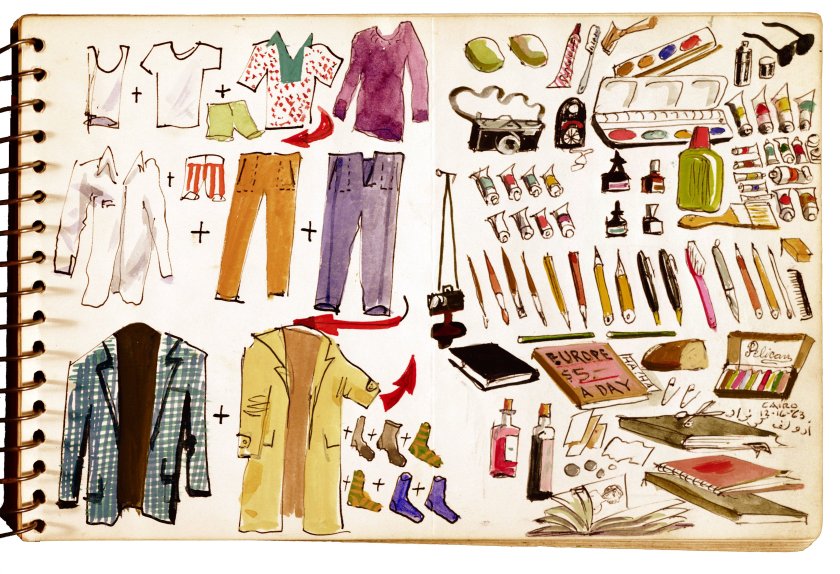
The Morgan Library & Museum is currently featuring an impeccably curated, list-oriented exhibit called, “Lists: To-dos, Illustrated Inventories, Collected Thoughts, and Other Artists’ Enumerations from the Smithsonian’s Archives of American Art,” which runs through October 2nd, 2011. Derick Rhodes (one of the co-founders of Listgeeks) recently had the opportunity to visit the exhibit, and apart from being overwhelmed by the profoundly fascinating array of lists on display, he thought it would be of special interest to the Listgeeks crowd to hear more about how the exhibit came together, and what inspired the selection of lists. Liza Kirwin, the Acting Director of the Archives of American Art at the Smithsonian Institution, who curated the exhibit (and compiled the accompanying, highly recommended book), was kind enough to answer Derick’s questions about the exhibit and provide some insight into this unique collection of lists:
Derick Rhodes/Listgeeks: How did the idea for the exhibition and associated book come about? Was there a specific list that first sparked your interest in curating the material?
Liza Kirwin: Picasso’s list, recommending European artists for the 1913 Armory Show, has long been considered one of the great treasures of the Archives of American Art. Written in Picasso’s hand, complete with misspellings and curious omissions, it revealed the behind-the-scenes organization of a landmark exhibition in the history of American art:
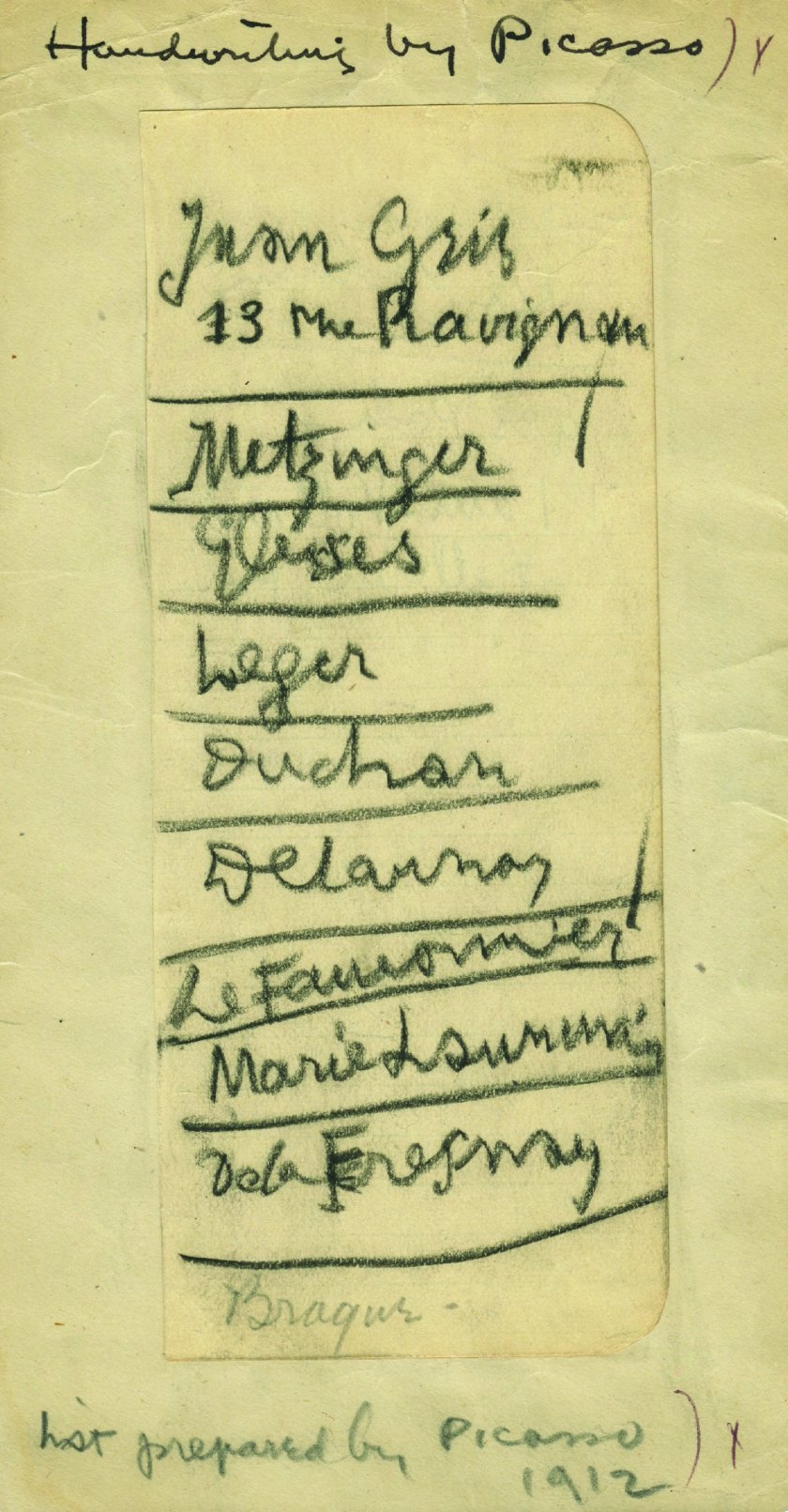
In 1996 this list was included in the Smithsonian’s pan-institutional treasures show, “America’s Smithsonian, Celebrating the 150th Anniversary of the Smithsonian Institution.” Then, when I organized an Archive of American Art’s treasures show in 2000, I again featured Picasso’s list, as well as Reginald Marsh’s 1953 “list letter” to collector Lawrence A. Fleischman; the John Trumbull auction catalog of 1844 with appraisal prices; Worthington Whittredge’s illustrated ledger with thumbnail sketches of commissioned works; and Everett Shinn’s personal account book listing titles and prices of his contributions to “The Eight” Show at Macbeth Galleries, 1908. There were a lot of lists, which got me thinking about this form of documentation and what it could tell us about the lives of artists.
I like to use common forms – the diary, illustrated letter, or love letter – as a hook to draw people into more esoteric aspects of American art history. It occurred to me that the list was a perfect vehicle for this kind of cultural exploration.
So I started making lots of lists of lists.
LG: The exhibit features a wide range of fascinating lists, from such disparate people as Pablo Picasso, Alexander Calder, and Eero Saarinen. Strolling through the space at the Morgan, I started to wonder what sorts of lists or list-related materials were excluded. Were there certain compelling things that you wanted to include that were a little too far from list form?
LK: That’s a good question. Some artists, such as Oscar Bluemner, were such avid list makers that it was hard to choose just one or two lists from their papers. When I started this search in the Archives, I thought I would find more lists of books to read, or New Year’s resolutions, but I didn’t, which seems odd to me.
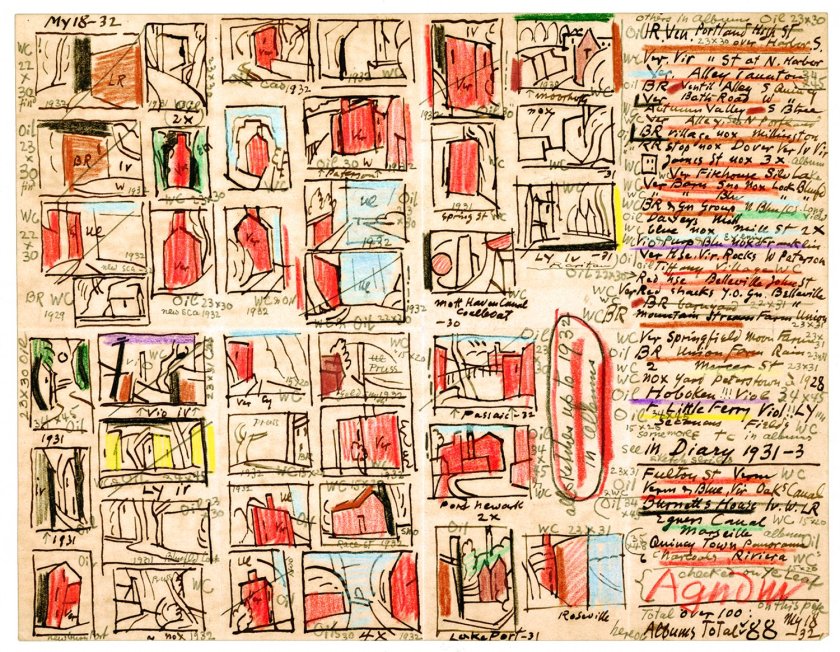
After the book was published one of my colleagues found artist David Ireland’s list of “assholes.” It was short, just five individuals, but one wonders how they qualified. I thought of including that list in the show at the Morgan Library, but in researching the names I could only identify two of the five, and I felt that such a list deserved greater context.
An art historian, who had written about painter Ad Reinhardt, told me that she had seen a list that Reinhardt kept of parties he was not invited to. I looked for that list, but sadly it is not among Reinhardt’s papers at the Archives of American Art.
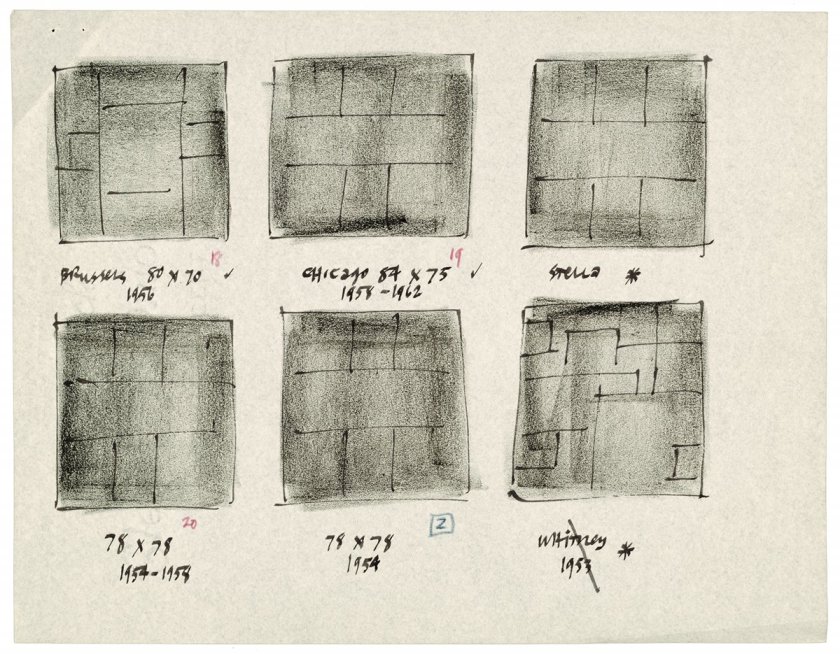
Now that I revisit some of the lists that I didn’t use the book, I regret not using them. There is a lengthy letter from Charles Frederick Briggs, a writer, novelist, editor and critic, to artist William Page, dated February 24, 1846, that includes his Briggs’s opinions, in list form, about portraiture and history painting. I may have decided not to use it because it was more letter than list.
LG: One of the things that’s been interesting about starting Listgeeks is observing the many forms a list can take. Some of the lists in the exhibit/book are simple and practical (like Franz Kline’s grocery list) while others are more emotional/expressive, or elaborate, multifaceted art objects (like Eero Saarinen’s list of Aline Bernstein’s good qualities). Are there specific lists in the exhibit you felt were especially revealing?

LK: Some of my favorites are Janice Lowry’s lists that she kept in her journals. They are most interesting read in progression – to-do lists that move to successive pages, and successive days, as well as lists of “angry grievances,” and “people I need to forgive.” She used lists to clarify her thoughts and move forward from day to day.

LG: Are there further plans for showing the exhibit in other cities?
LK: I am hoping that the show will travel to at least one more venue, but a second museum has not yet been confirmed. It is a quirky show (art-historically significant lists), but one that appeals to list makers and anyone interested in American art. If any of your readers have ideas, please let me know.
LG: What’s your relationship with list making? Could you share a list you created (handwritten or otherwise) in the process of curating the exhibit?
LK: My whole day is governed by lists. Here’s one of my typical to-do lists from my desk:
And here’s a list of lists not included in the exhibition:
Links:
